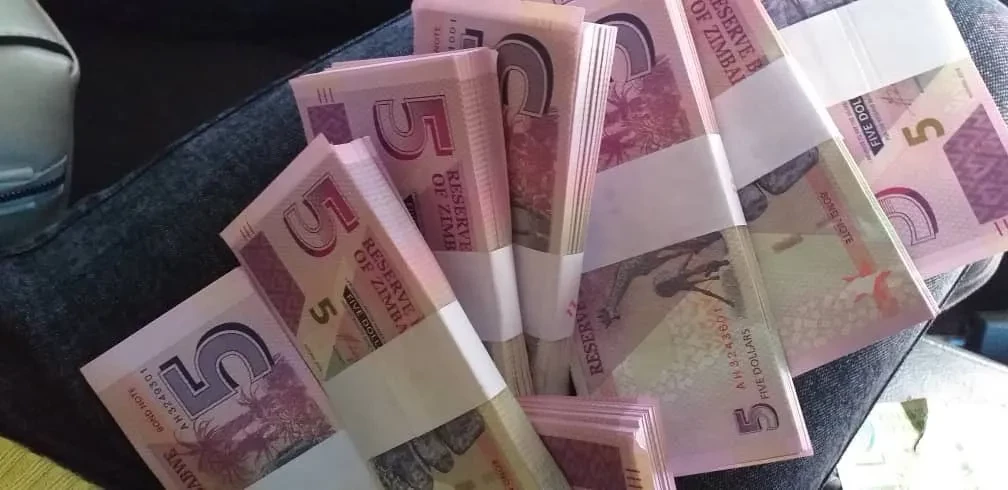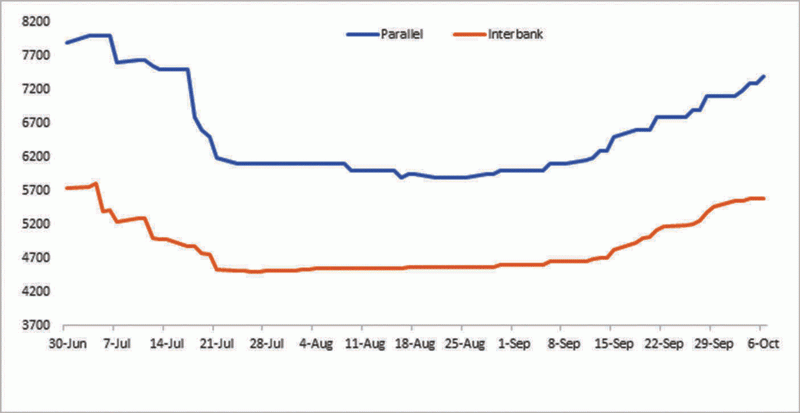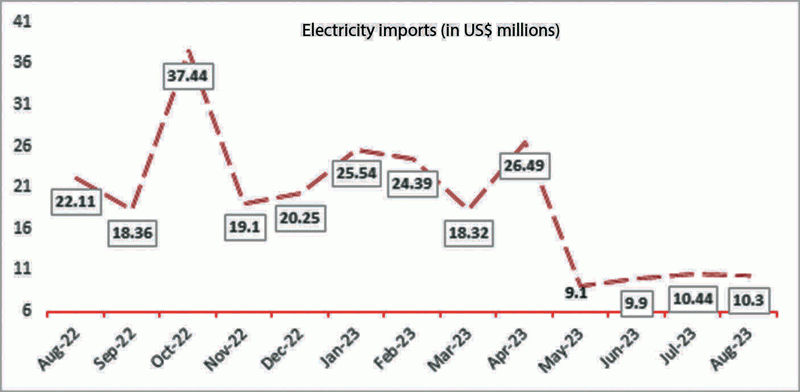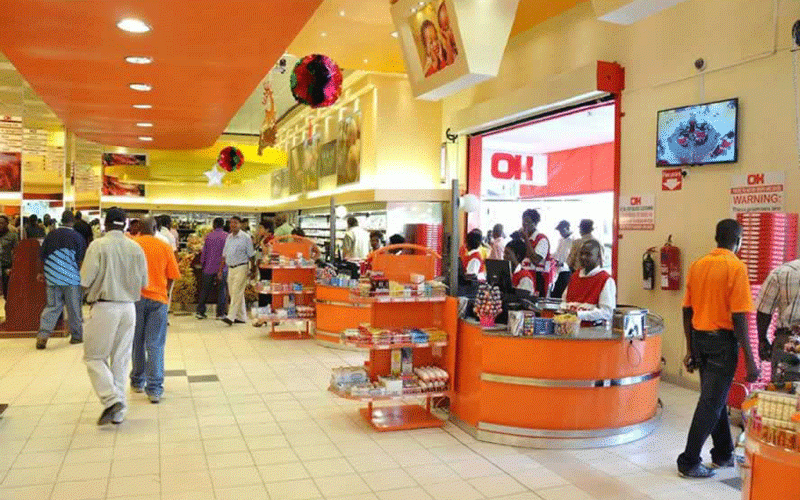
THE local currency (ZWL) and ZWL prices have been largely stable since the turn of the second half of the year (2HY23). But only after two consecutive months, the local unit has started to perform dismally against the US dollar in both official and alternative foreign exchange markets.
These fluctuations pose a great threat to macroeconomic stability because they increase the cost of transacting in Zimbabwe dollars (ZWLs) thus fuelling currency substitution. This column, therefore, analyses the performance of key economic variables to gauge the health of the economy.
Exchange rate
In September 2023, the Zimbabwe dollar (ZWL) erased 15,7% of its value against the USD to close the month at US$1:ZW$5 466.75. This was a significant monthly decline relative to August 2023 when the local unit slightly lost 1,9% to close at US$1:ZW$4 608.11.

In the alternative markets, the ZWL lost at least 15% of its value to close the month at an average of ZW$/US$7 100 from ZW$/US$ 6 000. As a result of the mounting ZWL decline particularly in alternative markets, the parallel market exchange premia are now widening, a threat to price stability.
The rising ZWL depreciation pressures experienced since the turn of September 2023 are emanating from the resumption of ZWL payments to government contractors and other service providers who in turn dump the local unit in the street chasing value (USD).
Also, ZWL depreciation pressures are being driven by human behaviour such as negative perceptions fuelled by disputed August 2023 harmonised elections as well as excessive unproductive rent-seeking powered by prevailing multiple exchange rates. For instance, in addition to different exchange rates for RTGS balances, cash balances (bond notes), and mobile money balances, the RBZ recently introduced gold-backed digital tokens (ZiG).
- Thousands flee economic mess
- ZimStat undertakes to pay enumerators
- 'Apostolic sects frustrating fight against measles'
- Graft 'bleeding' ZimStat
Keep Reading
The ZiG is an additional payment method for settling local transactions (buying and selling of goods and services). These digital tokens (gold e-wallets) have their own exchange rate, which is derived from the prevailing international price of gold.
ZWL depreciation pressure is expected to remain elevated in the coming months as fiscal spending balloons to cushion the economy and citizens from projected climatic shocks, domestic shocks (energy shortages), public debt distress, and weak global geopolitics.
Inflation
According to the national statistics agency, ZimStat, annual inflation spiked by 18,4% in September 2023. This means that consumer purchasing power has declined by 18,4% between September 2022 and September 2023.
In August 2023, annual prices mounted by 77,2%. From a month-on-month (MoM) perspective (August 2023-September 2023), prices, as measured by the all-items consumer price index (CPI), rose to 1% after witnessing two consecutive months of negative growth in August 2023 (-6,2%) and July 2023 (-15,3%).
Treasury directed ZimStat to publish blended inflation statistics in February 2023. In September 2023, ZimStat changed its inflation calculation methodology again, shifting from arithmetic aggregation of indices to geometric aggregation.
This largely explains the significant decline in annual inflation experienced in the month under review. The new methodology provides a price index that follows a higher weight instead of a higher magnitude.
ZimStat’s latest consumer spending survey found that 80% of transactions in the economy occur in USD whilst the remainder (20%) is in ZWLs.
However, blended figures give a misleading picture because not all consumers are largely earning in USD, a stable currency. For the outlook period, ZWL inflationary pressures are expected to remain highly elevated as the local unit remains fragile.
Market confidence in the ZWL is plummeting due to high public corruption and a lack of trust in the government and its institutions. Also, recurring domestic electricity shortages at a time global crude oil prices remain elevated increase energy costs, slow industrial activity, and threaten the stability of prices.
Electricity sector
According to the latest ZimStat statistics, Zimbabwe imported electrical energy worth US$10,3 million in August 2023, a slight decline from US$10,4 million in July 2023. Cumulatively, the nation spent US$134,5 million on electrical energy imports in the first eight months of 2023, about 23,2% higher than US$109,2 million spent in the same period in 2022.
Electricity imports (US$ millions)
The big jump in electricity imports so far in 2023 is linked to prolonged electricity load-shedding schedules experienced in the first half of the year (1HY23) largely powered by low Kariba dam levels and frequent breakdown of aging thermal production plants.
In the second half (2HY23), electricity supply has relatively improved owing to the completion and commissioning of two new US$1,5 billion Hwange thermal plants with a combined installed capacity of 600MW.

However, in September 2023 electricity load-shedding peaked pace across the country, an occurrence that is expected to hold in the coming months due to increased technical challenges associated with the operation of aged thermal units (Hwange Unit 1-6) coupled with rising electricity debt owed to the regional power pool.
Also, Kariba live-water levels are falling fast at a time when many parts of the Sadc region are expected to receive normal to below-normal rainfall in the 2023/24 season. This will significantly subdue production at the nation’s sole publicly-owned hydro plant.
Fuel s
The latest ZimStat data show that Zimbabwe imported diesel worth US$85,7 million in August 2023, up 12,3% from US$76,3 million in July 2023.
In year-to-date (YTD) terms, diesel imports are up 17,1% in August 2023. In the same month, combined leaded and unleaded petrol imports were US$41,1 million, up 5,4% from US$39 million in July 2023. In YTD terms, petrol imports are up 5,9% from US$38,8 million realised in August 2022.
The value of Zimbabwe’s fuel imports is increasing due to rising global crude oil prices largely powered by production cuts led by Saudi Arabia, the global top crude oil producer and exporter. Zimbabwe’s fuel demand is also a bit elevated due to recurring electricity shortages.
In line with rising global prices, Zimbabwe Energy Regulatory Authority (Zera) has increased the price cap of a litre of diesel to US$1,79 from US$1,76 in September 2023 while maintaining that of the petrol blend (E20) at US$1,65.
But be that as it may, Zimbabwe’s fuel pump prices remain too high relative to the Sadc regional average. This is attributable to the prevailing monopoly ethanol market, high fuel taxes, subdued competition, lack of adequate fuel infrastructure, and vested interests.
In the outlook, fuel imports are seen rising due to global supply uncertainties posed by instability in the Middle East, maintenance of production curbs by OPEC+, and improving global economic sentiment as inflation shows signs of cooling off in advanced economies.
Mining sector
The mining sector remains the top foreign currency earner for Zimbabwe. In 2022, the sector contributed US$5,6 billion to export receipts, up 12% from US$5 billion in 2021.
However, this year the sector has slowed. In the first half (1HY23), it contributed about US$2,58 billion to export receipts, down 12,8% from the 1HY22 outturn.
The sector is under immense pressure from the threat of weakening global prices as prices of key minerals have declined significantly. For instance, lithium is down 69%, diamond (-60%), palladium (-41%), rhodium (-74%), and nickel (-8%).
As for gold, the yellow metal lost 3.7% in September 2023. The decline was largely the result of higher opportunity costs caused by extensive run-on bond yields alongside a stronger dollar as well as a large drop in the Chinese local gold price premium.
The available official trade data show that Zimbabwe exported gold worth US$141 million, down 12,8% from US$161 million exported in July 2023.
Cumulatively, the nation earned about US$1,15 billion in the first eight months of 2023, down 10,9% from US$1,29 billion earned for the same period in 2022.
Gold exports (US$ millions)
The decline in gold export earnings is partly attributable to a decline in official gold deliveries. Cumulative deliveries of gold came in at 22,4 tonnes between January-September 2023, which lag behind 25,6 tonnes realised for the same period in 2022.
This decline in gold deliveries is attributed to side-marketing, smuggling, incessant rains experienced in the first quarter (1Q23), which affected small-scale and artisanal miners, and rising mining cost structure propped up by high electricity tariffs.
- Sibanda is an economic analyst and researcher. He writes in his personal capacity. — [email protected] or Twitter: @bravon96











